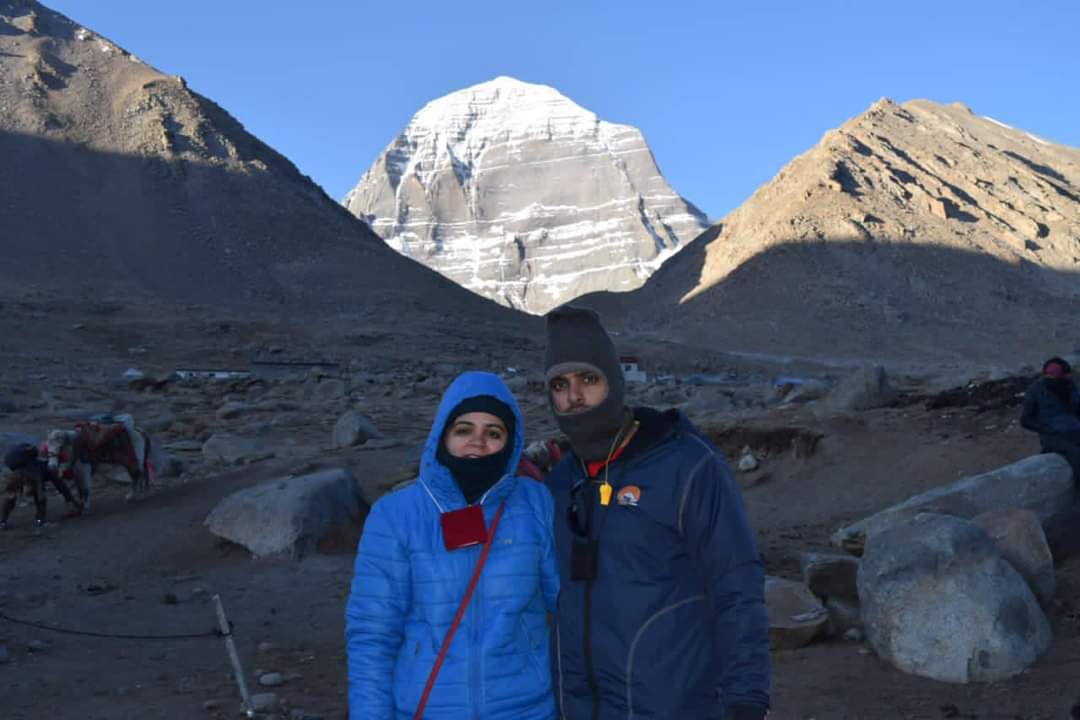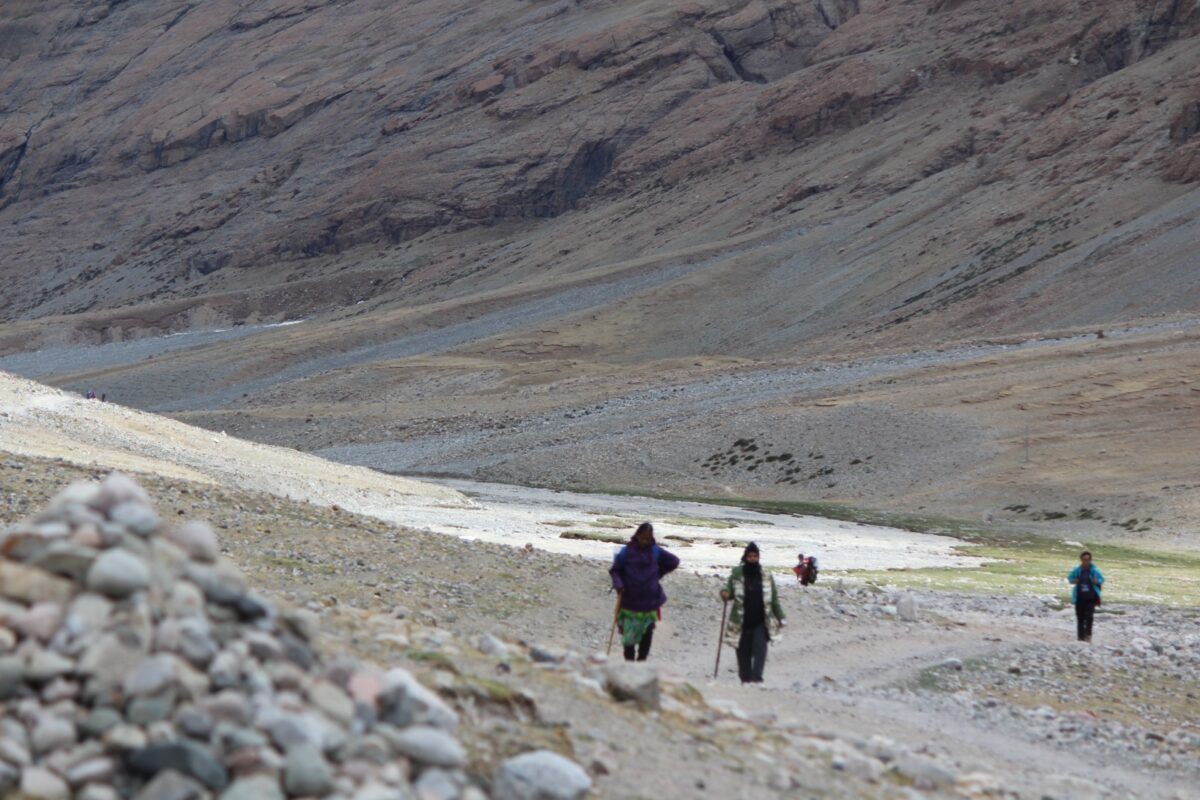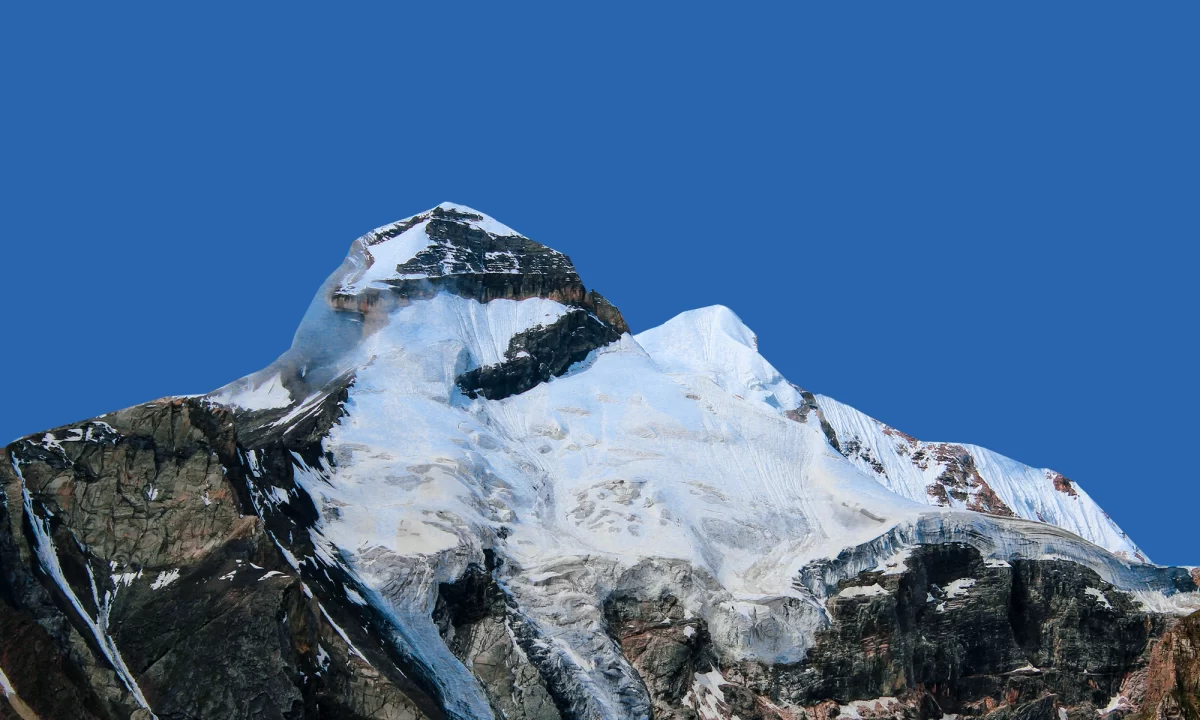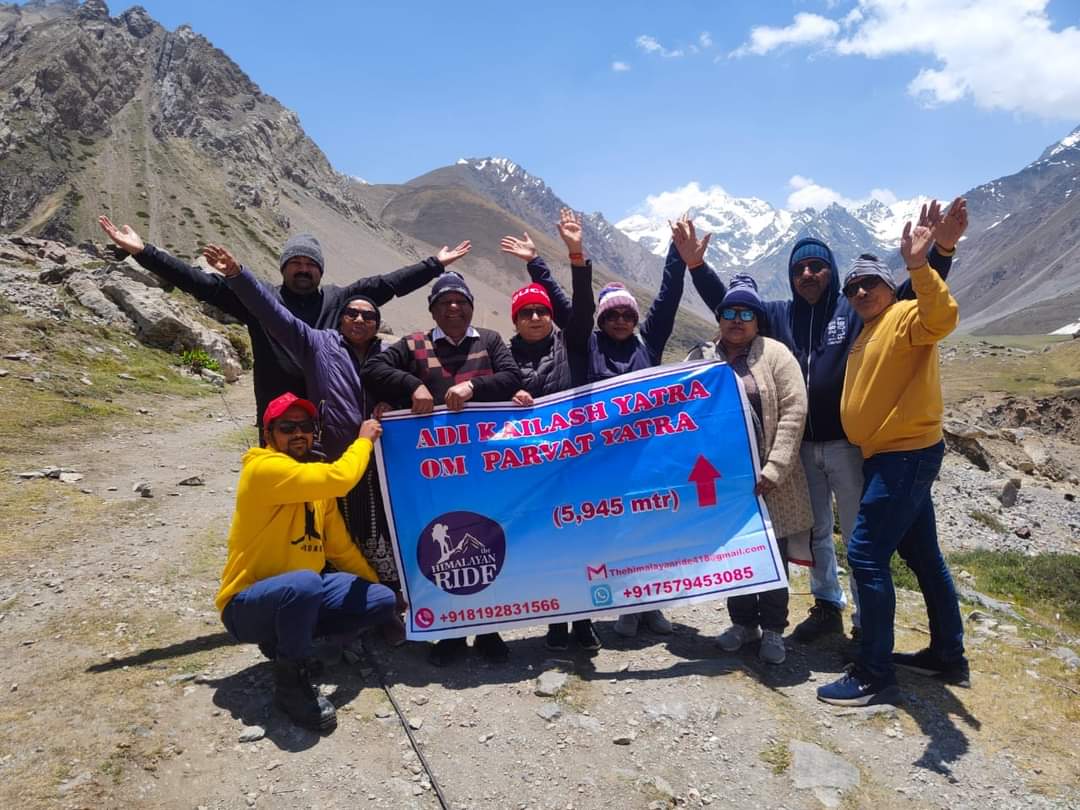The Kailash Mansarovar Yatra is a spiritual pilgrimage that holds immense significance in Hinduism, Buddhism, Jainism, and Bon. This sacred journey takes devotees to Mount Kailash, also known as Kailasa, a majestic mountain located in the Ngari Prefecture of the Tibet Autonomous Region in China. With an altitude of 6,638 meters (21,778 feet), Mount Kailash stands tall in the Kailash Range of the Transhimalaya, making it a prominent religious site and a hub of natural beauty.
Etymology: The Names Behind the Sacred Kailash Mansarovar
Mount Kailash is known by various names across different cultures and languages. In Sanskrit, it is called “Kailasa” or “Kailāśa,” which could be derived from the word “kelāsa,” meaning “crystal.” The Tibetan name for the mountain is “Gang Rinpoche,” which translates to “precious jewel of snows.” This name reflects the Tibetan word “gang” or “kang,” meaning “snow peak,” and “rinpoche,” an honorific term referring to something or someone precious.
Geology: A Mountain of Geological Significance
Mount Kailash is not only a sacred site but also a geological wonder. The region surrounding the mountain showcases extensive faulting of late-Cretaceous to mid-Cenozoic sedimentary rocks intruded by igneous Cenozoic granitic rocks. The mountain itself is believed to be a metasedimentary roof pendant supported by a massive granite base. The Cenozoic rocks found in the area were deposited before the subduction of the Tethys oceanic crust during the collision between the Indian and Asian continents.
Religious Significance: A Mountain Revered by Four Faiths
Mount Kailash holds immense religious significance for four major religions: Hinduism, Buddhism, Jainism, and Bon. Each faith has its own beliefs and legends associated with this sacred mountain.
Kailash Mansarovar In Hinduism
Hinduism considers Mount Kailash as the abode of Lord Shiva and his consort goddess Parvati, along with their children Ganesha and Kartikeya. According to Hindu mythology, it is believed that Lord Shiva resides on this mountain. The epic Ramayana narrates an incident where the demon king Ravana attempted to uproot Mount Kailash, but Lord Shiva pressed his right big toe on the mountain to trap Ravana. This version of Lord Shiva is also known as Ravananugraha, the form that favored Ravana.
According to the Mahabharata, the Pandava brothers, accompanied by their wife Draupadi, undertook a journey to Mount Kailash on their path to liberation. It is believed to be a gateway to Heaven, also known as Swarga Loka in Hinduism. The Vishnu Purana describes Mount Kailash’s four faces made of crystal, ruby, gold, and lapis lazuli. It is considered a pillar of the world and represents a lotus with six mountain ranges symbolizing its petals.
Kailash Mansarovar In Jainism
In Jainism, Mount Kailash is associated with the attainment of moksha (liberation). According to Jain scriptures, it is believed that Rishabhadeva, the first Jain Tirthankara, attained nirvana (enlightenment) on this sacred mountain. Emperor Bharata Chakravartin, the son of Rishabhadeva, constructed shrines and stupas dedicated to the 24 Tirthankaras on Mount Kailash, known as Sinhnishdha.
Kailash Mansarovar In Buddhism
In Buddhism, Mount Kailash is known as Mount Meru and holds great significance in Buddhist cosmology. It is considered a major pilgrimage site for various Buddhist traditions. Vajrayana Buddhists believe that Mount Kailash is the abode of Cakrasaṃvara, also known as Demchok, the Buddha who represents supreme bliss. Padmasambhava, a revered figure in Tibetan and Himalayan Buddhism, has several associated sites in the region, contributing to the establishment of Buddhism as the main religion in Tibet.
Kailash Mansarovar In Bon
Bon, the indigenous religion of Tibet, also considers Mount Kailash as a sacred site. Bon texts mention several names for the mountain, including Water’s Flower, Mountain of Sea Water, and Nine Stacked Swastika Mountain. According to Bon tradition, Mount Kailash is the abode of the sky goddess Sipaimen.
Pilgrimage: The Spiritual Journey to Kailash Mansarovar
The Kailash Mansarovar Yatra is a pilgrimage that attracts devotees from all over the world. The pilgrimage is typically undertaken between April and mid-October, with April-June and September-October being the recommended periods. The pilgrimage route covers approximately 52 kilometers (32 miles) around Mount Kailash and takes devotees on a journey of faith and self-discovery.
The Kailash Parikrama or Kora
The circumambulation of Mount Kailash is known as the Kailash Parikrama or Kora. Pilgrims from different religions perform this ritual in a clockwise direction, except for Bonpos, who do it counterclockwise. The Kora is believed to accumulate meritorious karma, cleanse sins, and bring good fortune. The pilgrimage takes around three days for most pilgrims, while some undertake a more rigorous regimen involving body-length prostrations.
The Kailash Parikrama begins and ends in Darchen, a small outpost at an elevation of 4,670 meters (15,320 feet). Pilgrims can choose to complete the journey on foot or by using ponies or domestic yaks. The highest point on the pilgrimage is the Drolma pass, located at an altitude of 5,650 meters (18,540 feet). Along the way, pilgrims camp near Dirapuk Gompa and Zutulphuk, where they can rest and immerse themselves in the spiritual ambiance of the region.
The Kailash Parikrama is a physically demanding journey due to the high altitude and rugged terrain. However, the challenging path is rewarded with breathtaking views of the snow-capped peaks, serene lakes, and the spiritual energy that permeates the surroundings.
Mountaineering: The Unconquered Summit
Mount Kailash has long fascinated mountaineers with its majestic presence. However, climbing the mountain is strictly prohibited due to its religious significance. Various mountaineers and explorers have attempted to conquer Mount Kailash, but none have succeeded.

 "
"
 "
"
 "
"
 "
"